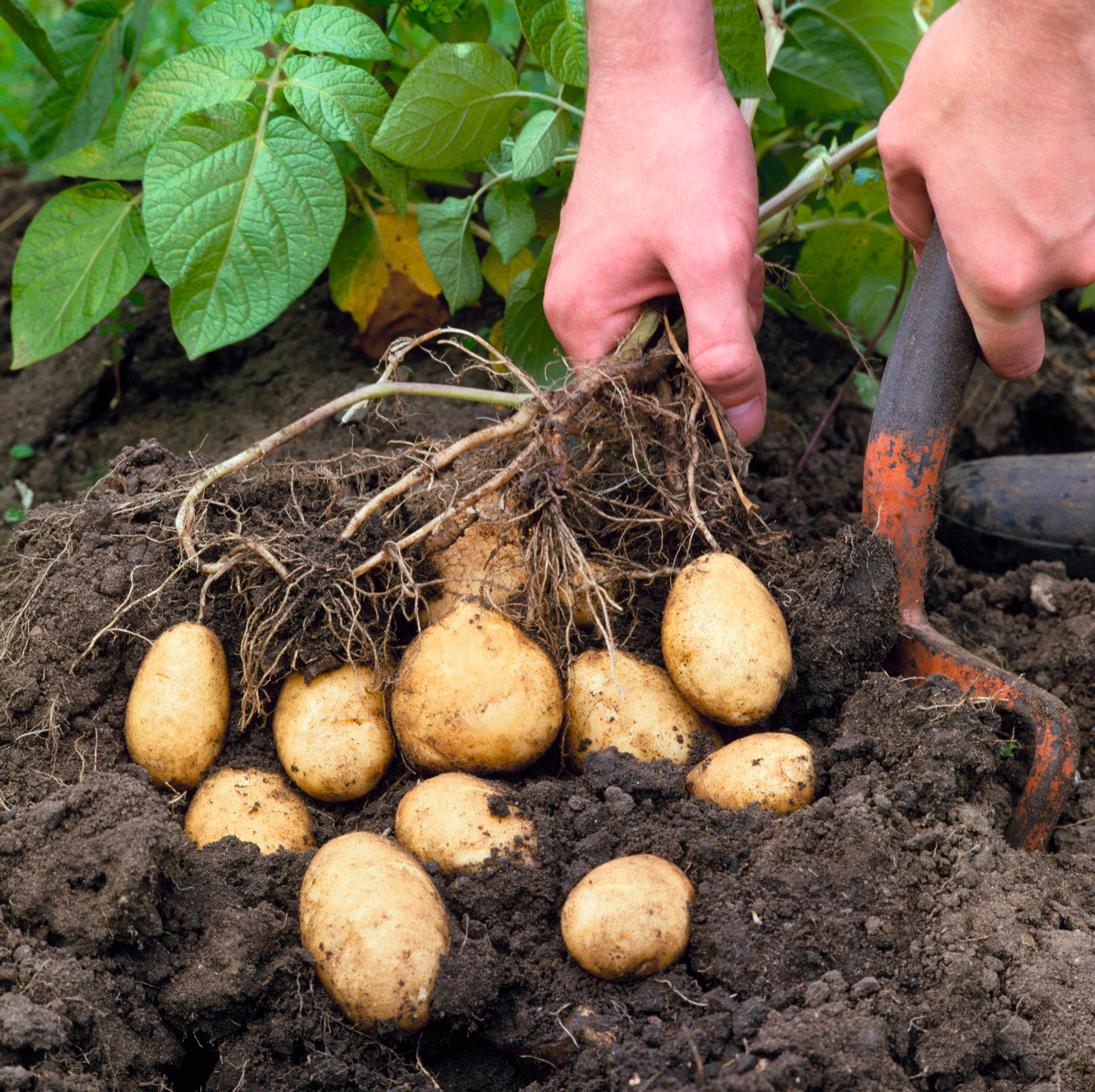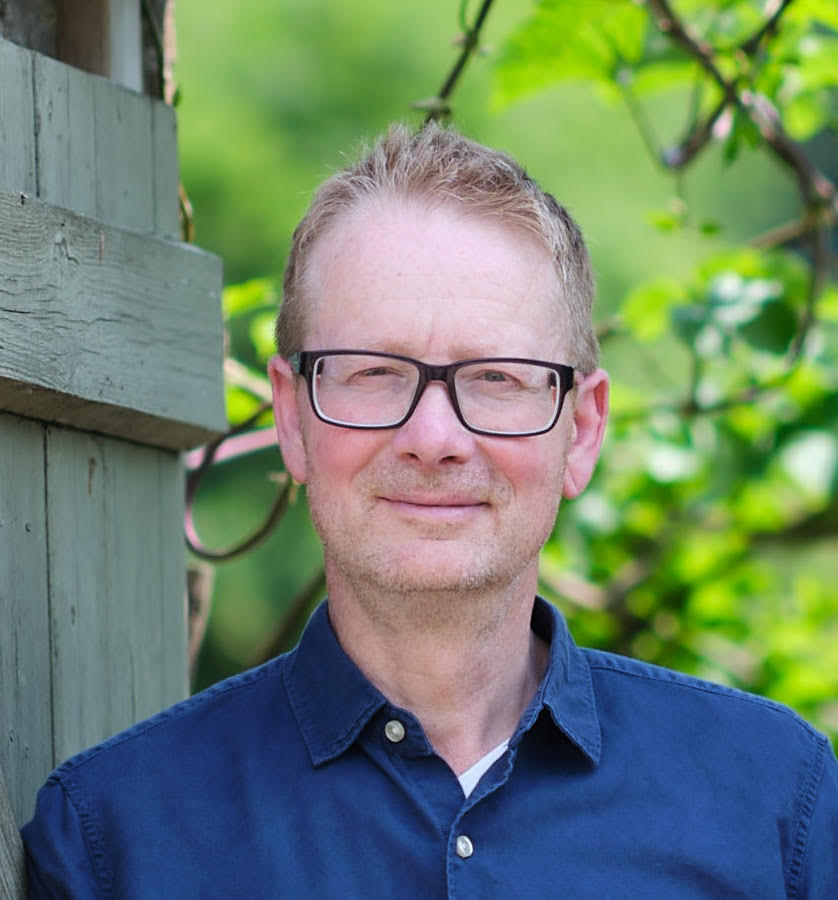Mark Diacono: Chips, mash, roasted or dauphinoise — all better with your own potatoes
The versatile varieties of the potato make it a great crop to experiment with and, no matter what, nothing beats the taste of home grown


I've spent the past year writing a book about turning the best of the harvest into delicious main courses and, with all the recipe development that goes on, I’ve been reminded in the strongest terms about how important it is to make your list of seed potatoes with how you plan to use them in mind.
When I lifted the first ‘Yukon Gold’ potatoes from the garden last summer, I had been thinking for weeks about how good the chips they make would taste and still I’d underestimated their excellence: as familiar as I am with that variety, they outdid my hopes for the recipe I had written with them in mind. I do think about getting a steady supply through the season when I’m ordering seed potatoes, but I have to confess I’m also thinking about chips, mash, potato dauphinoise, roast potatoes, buttered new potatoes and more.
Generally, I avoid growing varieties I can find in the shops. It’s not that they are necessarily substandard—although most are much better homegrown than they are on the shelves—but I find one of the pleasures of growing vegetables is experiencing flavour, texture and colour beyond what’s on sale.
With First Earlies—those that are harvested first—I’m really after waxy new potatoes, where that texture is as important as the flavour. The old Scottish variety ‘Arran Pilot’ is as delicious as it is high yielding, the red-/yellow-skinned ‘Celebration’ and the eternally popular ‘Foremost’ similarly so. Of course, I have to grow ‘International Kidney’, widely appreciated as the ‘Jersey Royal’ when grown on that island.
'I had been thinking for weeks about how good the chips they make would taste and still I’d underestimated their excellence'
I have to say that, if buying from the shops, I prefer them towards the end of their season when—perhaps for being in the ground longer—their flavour seems fuller. I apply the same principle at home, of not being in a crazy rush to lift most Earlies. ‘Jazzy’, with its medium-sized waxy potatoes and wonderful flavour, is a new Second Early variety I’ve been really impressed by: I simply boil and butter it and that simple treatment brings out its best.
Apart from the eating qualities, the other pleasure of these Earlies is that they are grown and harvested before even the slightest possibility of blight appears. This fungal nuisance initially appears as blotched leaves, followed by rotting stems and tubers, in the often warm, moist conditions from midsummer.
If I’m going to risk blight, it’ll be for ‘Ratte’. As much as I love the deliciously nutty ‘Pink Fir Apple’, ‘Ratte’ has many of its qualities, but is harvested earlier and is less knobbly, which makes preparation easier. Briefly boiled then sliced into a frying pan with olive oil, parsley and garlic, it is one of my favourite side dishes of summer.
Exquisite houses, the beauty of Nature, and how to get the most from your life, straight to your inbox.
I may also give a row to ‘Shannon’, a new, early Maincrop potato that’s excellent for baking. I’ve not tried it before, but the promise of excellent blight and scab resistance, superb flavour and early-maturing, large, red-skinned bakers is quite tempting.
I may not eat as much mashed potato as I once did, but when I do it has to be superb: the floury-fleshed ‘Kestrel’ is better than any I’ve tried for this. It’s also little troubled by slugs and—should you be so inclined—well suited to exhibiting.
I confess to breaking my rule about not growing varieties found in the shops for a few and ‘King Edward’ one of them. It is, together with ‘British Queen’, as good as I know for roast potatoes and the flavour is much superior when grown yourself.
Lastly, I like to grow an allrounder—something that I can lift early for salads or allow some to grow on into summer: this year, I’m returning to an old favourite, ‘Red Duke of York’. Its intensely red potatoes become lighter in colour as they increase in size and, although their flavoursome tubers are floury in texture, they don’t fall apart when boiled. It’s an old, multi-purpose, reliable and delicious favourite that I can lift when I like, depending on my appetite.
The secret to delicious homegrown meals starts when you choose your suppliers. For the best quality and a range, don’t buy seed potatoes where you buy light bulbs or paint: choose a trusted nursery. Better still, visit a potato day—an internet search will tell you where your nearest is—as there you can buy anything, from single tubers of numerous varieties for the greatest range of flavours to big bags of one kind.
Mark Diacono grows edibles, both usual and unusual, at Otter Farm in Devon. His book Spice: A Cook’s Companion published by Quadrille, £25, is out now.

Alan Titchmarsh: Change your plants, buy a greenhouse, erect a shed — do something to shake up your garden this winter
Spring will be here before you know it, so why not shake up your garden before the bloom? Alan Titchmarsh

Simple Supper: Cheesy Baked Potatoes recipe
Seriously easy and delicious baked potatoes

The best British potatoes to grow for every meal, from roast potatoes and chips to mash and salads
Mark Diacono runs through his go-to list of British potato varieties to grow — and explains how to help them avoid

The Country Life Podcast
Listen to all the episodes of the Country Life Podcast.
Mark is lucky enough to spend most of his time eating, growing, writing and talking about food. He has written fourteen award-winning books, including A Year at Otter Farm and A Taste of the Unexpected (both won Food Book of the Year, and Garden Book of the Year). Known for growing everything from Szechuan pepper to pecans to Asian pears, Mark's refreshing approach to growing and eating has done much to inspire a new generation to grow some of what they eat. He was involved in the early days of River Cottage, appearing in the TV series, and writing four River Cottage books. Mark writes to a global audience on his best-selling Substack: Mark Diacono’s Abundance.
